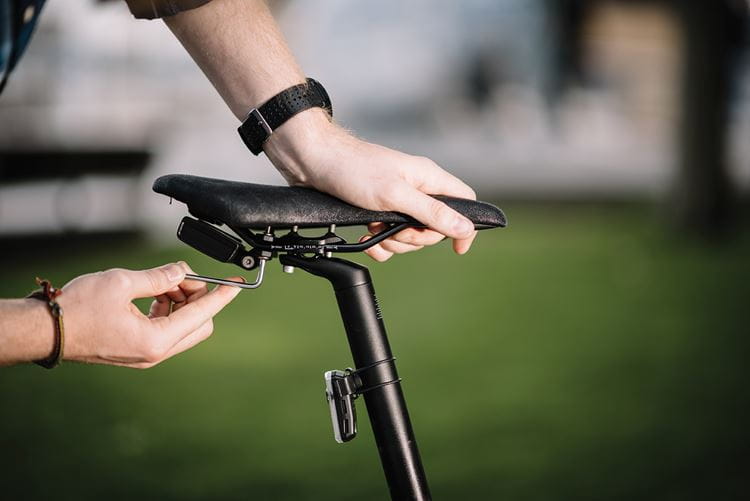Nordic Semiconductor today announces that Northern Ireland cycling start-up, See.Sense, is employing the Nordic nRF9160 SiP in the world’s first cellular bike security tracker that uses both GPS and the NB-IoT flavor of the latest cellular IoT low power wide area (LPWA) networking technology. This enables users to automatically locate and track their bikes from a smartphone for up to three months on a single charge from an internal rechargeable lithium-polymer battery.
The 80g See.Sense AIR is about half the size of a deck of playing cards (65 x 50 mm) and designed to fit securely under any bike’s seat or bottle cage. See.Sense says that after a simple set-up procedure, there is not further input required from the user beyond a once-every-three-month battery recharge.
“We’re totally fed up with bike vandalism and theft,” comments See.Sense CEO, Philip McAleese. “AIR was developed after listening to what our cycling community wanted. If the bike is moved or tampered with, AIR will sound an alarm and immediately text message the rider; we call this ‘Fight Mode’.
“If the bike is stolen, AIR will detect this and switch into ‘Flight’ mode setting, rapidly transmitting high-powered tracking signals to allow the owner to quickly and accurately locate their bike to the nearest couple of meters. This tracking information can then be passed to local law enforcement increasing the chances of recovery. We think it’s a game-changer.”
AIR will not only protect the bike, it will also protect its rider, identifying if the bike’s been involved in a crash and sending an SMS with the precise location to the rider’s assigned contact. AIR can also make the experience of cycling better by constantly and accurately monitoring the cyclist’s experience on their ride, so that aggregated and depersonalized ride insights can be shared with partners to improve conditions for cycling. See.Sense has already worked on Ride Insights with cities including London, Manchester, Dublin, and Antwerp.
The multimode Nordic Semiconductor nRF9160 SiP has an integrated LTE-M/NB-IoT modem plus GPS and is certified for global cellular IoT applications. It has a dedicated 64 MHz Arm® Cortex™-M33 processor application processor, 1 MB Flash and 256 KB RAM memory, integrated RF front end, and is supplied in a compact 10 x 16 x 1 mm package. A range of analog and digital peripherals are also included, plus automated power and clock management, Arm TrustZone® for trusted execution, and Arm CryptoCell 310 for application layer security.
McAleese says See.Sense considered a wide range of long-range LPWA network wireless technologies including LoRaWAN, Sigfox, and NB-IoT’s sister cellular technology, LTE-M. “For us, NB-IoT was a clear winner, providing good range and upload speed at a reasonable power consumption,” McAleese continues. “Testing quickly established that moving platforms also performed well. And we found that NB-IoT also had fewer restrictions on duty cycles and data size limitations than both LoRaWAN and Sigfox; making it a much more appealing platform for the AIR.”
The See.Sense AIR will retail for around $150 and will be begin shipping in Europe April next year, with a U.S. launch planned by the end of 2020. Each individual AIR will also come with two years’ free cellular connection, with an approximate $ 15 annual charge from year three.

